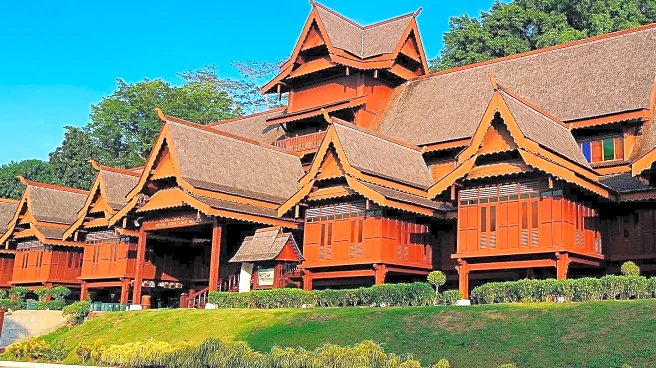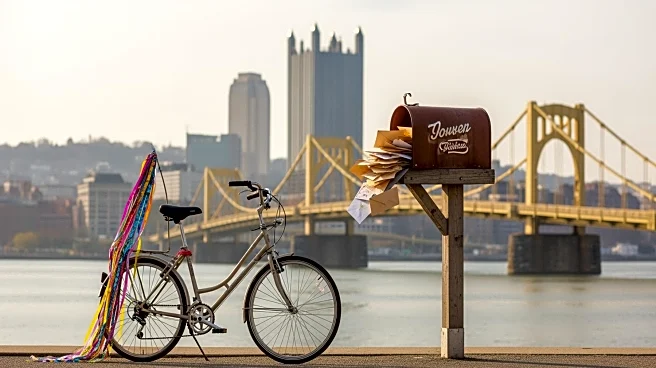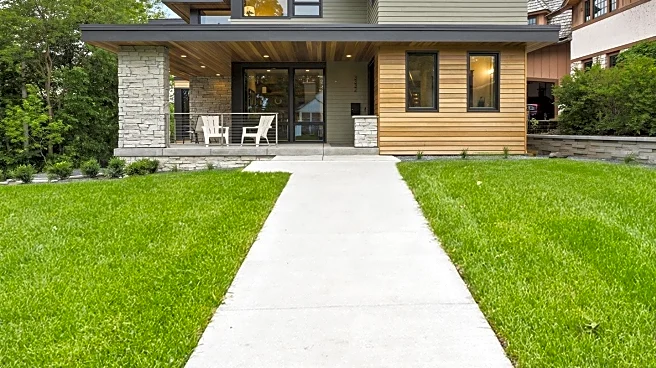What's Happening?
An exhibition titled 'Frank Lloyd Wright’s Southwestern Pennsylvania: The Pittsburgh Projects' is currently on display at the 820 Gallery in Pittsburgh. This exhibition showcases the visionary yet unrealized
designs of renowned architect Frank Lloyd Wright for the city of Pittsburgh. Wright's plans, commissioned by department store mogul Edgar J. Kaufmann in the mid-20th century, included a striking residential block, a spiral-shaped self-service garage, and a sprawling civic center with arts venues and open-air spaces. These designs, which were never built, are now brought to life through digital renderings and animated videos, offering a glimpse into Wright's innovative approach to urban design.
Why It's Important?
The exhibition underscores the enduring influence of Frank Lloyd Wright's architectural philosophy, particularly his concept of organic architecture, which seeks to harmonize manmade structures with the natural environment. By revisiting these unrealized projects, the exhibition not only celebrates Wright's legacy but also inspires contemporary urban design discussions in Pittsburgh. The city's current embrace of bold urban design ideas, as seen in projects like the forthcoming Arts Landing, reflects a renewed interest in integrating cultural and architectural innovation into urban development. This exhibition serves as a reminder of the potential for architecture to shape and revitalize urban spaces.
What's Next?
The exhibition is set to run until May 10, 2026, providing ample opportunity for architects, urban planners, and the general public to engage with Wright's visionary designs. As Pittsburgh continues to explore new urban development projects, the ideas presented in this exhibition may influence future architectural endeavors in the city. Additionally, the exhibition could spark broader discussions on sustainable and innovative urban planning, potentially impacting policy decisions and development strategies in Pittsburgh and beyond.
Beyond the Headlines
The exhibition not only highlights Wright's architectural genius but also raises questions about the challenges of translating visionary designs into reality. The fact that these projects were never realized points to the complexities involved in urban planning, including financial, logistical, and political hurdles. By examining these unrealized designs, the exhibition invites reflection on the balance between ambition and feasibility in architectural projects, offering valuable lessons for future urban development initiatives.













